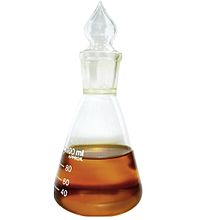
Photo from wikipedia
Abstract Cheese whey exploitation in a biorefinery manner is proposed involving anaerobic acidogenesis by a UASB mixed anaerobic culture and alcoholic fermentation by kefir. Both cultures were immobilized on γ-alumina.… Click to show full abstract
Abstract Cheese whey exploitation in a biorefinery manner is proposed involving anaerobic acidogenesis by a UASB mixed anaerobic culture and alcoholic fermentation by kefir. Both cultures were immobilized on γ-alumina. The produced organic acids (OAs) and ethanol could be esterified to obtain a novel ester-based biofuel similar to biodiesel. During acidogenesis, lactic acid-type fermentation occurred leading to 12 g L −1 total OAs and 0.2 g L −1 ethanol. The fermented substrate was subsequently supplied to a second bioreactor with immobilized kefir, which increased the OAs content (15 g L −1 ), especially lactic acid, and slightly the ethanol concentration (0.3–0.4 g L −1 ). To further increase ethanol concentration, a second experiment was conducted supplying whey firstly to the immobilized kefir bioreactor and then pumping the effluent into the acidogenesis bioreactor, resulting in 40% increase of OAs and 10-fold higher ethanol content. The residual sugar was ∼50% of the initial whey lactose; consequently, future research could result to further increase of ethanol and OAs.
Journal Title: Energy Conversion and Management
Year Published: 2017
Link to full text (if available)
Share on Social Media: Sign Up to like & get
recommendations!